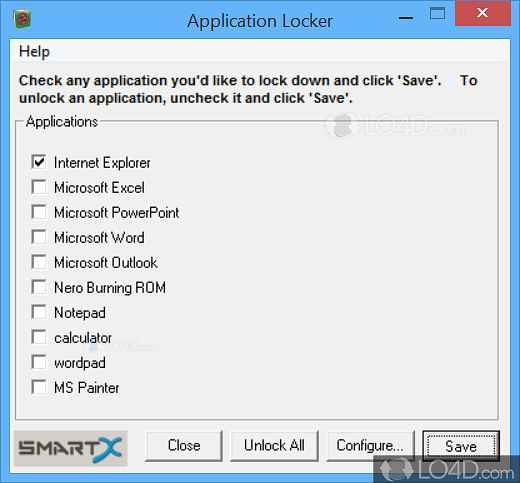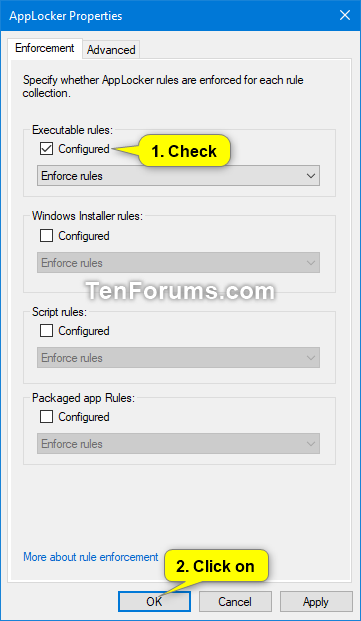

- #Windows 10 applocker alternative how to
- #Windows 10 applocker alternative install
- #Windows 10 applocker alternative windows
Go to Group Policy Editor > Computer Configuration > Administrative Templates\System\Device Installation\Device Installation Restrictions. Go to Group Policy Editor > Computer Configuration > Administrative Templates\System\Logon\Turn off app notifications on the lock screen. Turn off app notifications on the lock screen. Go to Settings > Privacy > Camera, and turn off Let apps use my camera. Go to Power Options > Choose what the power button does, change the setting to Do nothing, and then Save changes. Go to Control Panel > Ease of Access > Ease of Access Center, and turn off all accessibility tools. Hide Ease of access feature on the logon screen. Go to Group Policy Editor > User Configuration > Administrative Templates\Start Menu and Taskbar\Remove All Programs list from the Start menu. For a more secure experience, we recommend that you make the following configuration changes to the device: In addition to specifying the apps that users can run, you should also restrict some settings and functions on the device. To force the Application Identity service to automatically start on reset, open a command prompt and run: sc config appidsvc start=auto (optional) If rules were generated for apps that should not be run, you can delete them by right-clicking on the rule and selecting Delete.īefore AppLocker will enforce rules, the Application Identity service must be turned on. Then use the dialog to choose a different user or group of users. (optional) If you want a rule to apply to a specific set of users, right-click on the rule and select Properties. The wizard will now create a set of rules allowing the installed set of apps. Be patient, it might take awhile to generate the rules. On the Rule Preferences page, click Next. Type a name to identify this set of rules, and then click Next. Select the folder that contains the apps that you want to permit, or select C:\ to analyze all apps. Right-click Executable Rules and then click Automatically generate rules. Go to Security Settings > Application Control Policies > AppLocker, and select Configure rule enforcement.Ĭheck Configured under Executable rules, and then click OK. Run Local Security Policy (secpol.msc) as an administrator.
#Windows 10 applocker alternative install
Use AppLocker to set rules for appsĪfter you install the desired apps, set up AppLocker rules to only allow specific apps, and block everything else. For desktop apps, you can install an app for all users without logging on to the particular account. For UWP apps, you must log on as that user for the app to install.
#Windows 10 applocker alternative windows
This works for both Unified Windows Platform (UWP) apps and Windows desktop apps. You can also use AppLocker to set rules for applications in a domain by using Group Policy.įirst, install the desired apps on the device for the target user account(s).
#Windows 10 applocker alternative how to
This topic describes how to lock down apps on a local device.

For more information, see How AppLocker works. However, when an AppLocker rule for a specific rule collection is created, only the files explicitly allowed in a rule are permitted to run. If no AppLocker rules for a specific rule collection exist, all files with that file format are allowed to run. AppLocker rules specify which apps are allowed to run on the device.ĪppLocker rules are organized into collections based on file format. You can restrict users to a specific set of apps on a device running Windows 10 Enterprise or Windows 10 Education by using AppLocker. For devices running Windows 10, version 1709, we recommend the multi-app kiosk method.


 0 kommentar(er)
0 kommentar(er)
